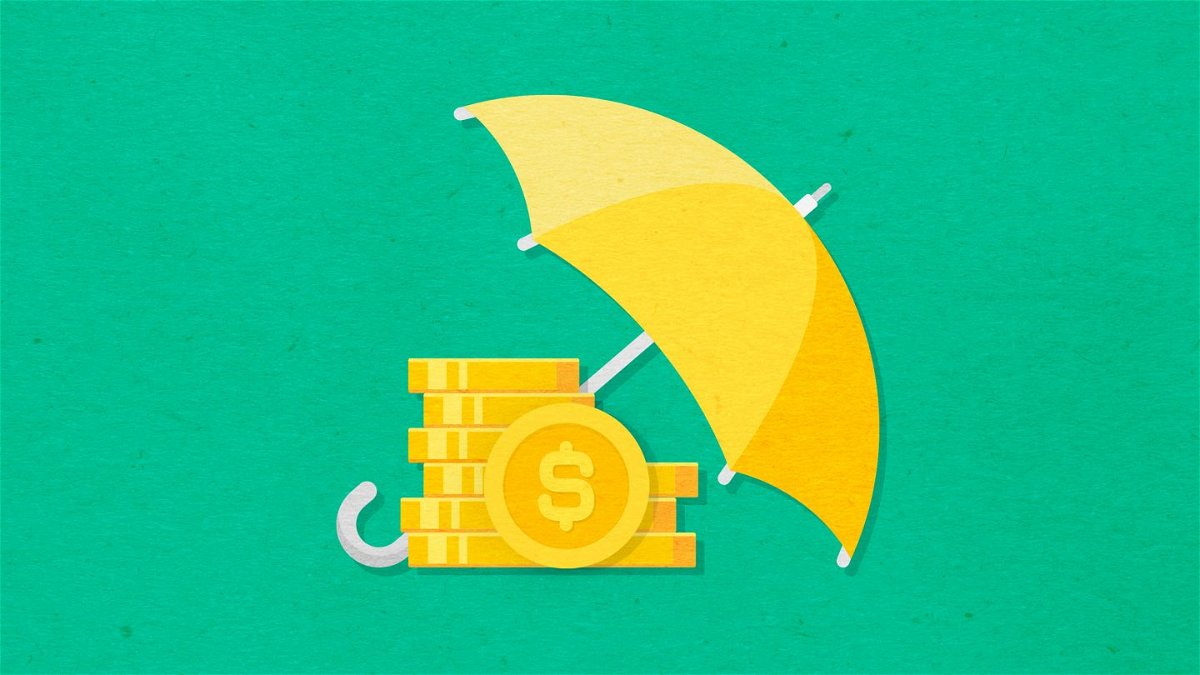How to protect your nest egg from inflation

If your sole goal is to beat inflation
By Jeanne Sahadi, CNN Business
Key inflation readings soared above 5% this spring, with prices rising on everything from food to metals to transportation.
No one can say with certainty whether we’re in for a prolonged period of high inflation or a short one due to pandemic-induced issues like supply chain problems.
Either way, today’s concerns about inflation serve as a good reminder to hedge against it in your savings and investments.
After all, even moderate levels of inflation will reduce the value of your money over time. For example, to match the purchasing power of every $10,000 you have in savings today, you’ll need $16,400 in 20 years if annual inflation runs at 2.5%.
Get real about your return
As you save and invest for a goal such as retirement, aim to generate annual returns that are higher than inflation.
These days, keeping your money in a bank savings account for anything other than near-term needs isn’t much better than stuffing it under your mattress. It will cost you money since it’s not keeping up with rising prices. And of late, that’s an understatement. The average interest rate on savings accounts was a mere 0.06% in early June, according to Bankrate.com. And the 10-year Treasury has not been yielding more than 1.5%.
“There is no age at which you can say, ‘I don’t need growth.’ At the very least you need to keep up with inflation. Otherwise you get poorer,” said certified financial planner Mari Adam, a senior wealth advisor at Mercer Advisor in Boca Raton, Florida.
So if inflation is running at 3%, you at least want to earn 3% on your nest egg for your money to maintain the same purchasing power. But more is better if you want to generate what’s called a real rate of return, which is how much your investments grow above inflation. So if your portfolio grows by, say 7%, your real rate of return would be 4%.
Manage the risk
It’s not possible for anyone to say with certainty how fast prices will rise in the future.
But you can bet there will be some inflation over the long term. So you should take steps broadly to protect yourself from it.
“You can creatively manage through the risk. We manage that risk instead of trying to be so smart and figure this out,” said certified financial planner Clark Kendall, who founded Kendall Capital in Rockville, Maryland.
But being creative doesn’t mean having to create complex strategies. “My bottom line is don’t complicate stuff,” Adam said. “Diversify to protect yourself.”
By that she means investing in various asset classes — and within them — to protect against the risk of losing money.
Choose the right mix of stocks and bonds
If your sole goal is to beat inflation, you’d only invest in stocks long-term, since historically they have had much stronger returns than bonds and cash.
But few people have the stomach to ride out major stock downturns, which can last 18 months on average, Kendall said. Nor do those close to or in retirement have the luxury of time to let their stock portfolio fully recover before needing to tap their funds.
So bonds should be part of your overall mix of investments. How much a part will depend on your age or how long you expect to live and your risk tolerance.
But just as a yard stick, for someone who can handle moderate risk and who expects to be invested for many years, a portfolio of 60% stocks and 40% bonds can help you accomplish three things: grow your money, protect against inflation over time and guard against the temptation to run for the hills when stocks plummet.
That said, you’ll want to further diversify within each of those asset classes and across sectors (such as financials, real estate, commodities, technology and energy).
For instance, value stocks — which often pay dividends and may trade at a share price below where it should be given a company’s earnings or other fundamentals — typically hold up better during periods of high inflation than growth stocks, Kendall said. So having a mix of both in your portfolio is prudent.
In terms of bonds, fixed-income government bonds haven’t offered a high real rate of return, he added.
But you can invest in a mix of different types and durations of bonds to bolster your return.
The price of long-term bonds will fall when interest rates rise. On the flip side, you can benefit from that when the bonds are exchanged for newer ones paying a higher yield, Adam noted. So you can “ladder” your bond holdings so when some come due every year they are replaced by new ones. Or if you’re invested in an actively managed bond fund, the manager should be investing in ways to hedge against inflation.
There are also inflation-protected bond instruments such as Treasury Inflation Protected Securities (aka TIPS), as well as I-Savings Bonds, but each have their own rules and restrictions.
And there are somewhat riskier options, like high-yielding corporate bonds, or preferred stock, which gives you an equity interest in a company but can also offer higher regular interest payments than a bond.
The bottom line: You’ll want a diversified mix of bond holdings since no single option will give you all that you need in terms of return and inflation protection, Adam noted. “You can’t say, ‘I’m gonna buy TIPS and I’m done.’ “
It’s also true that no single rule of thumb to hedge against inflation is guaranteed to deliver all that you need since there are always so many factors in play that are beyond your control.
That’s why, Kendall said, it never hurts to save more than you think you’ll need as a hedge against the unknown.
The-CNN-Wire
™ & © 2021 Cable News Network, Inc., a WarnerMedia Company. All rights reserved.

